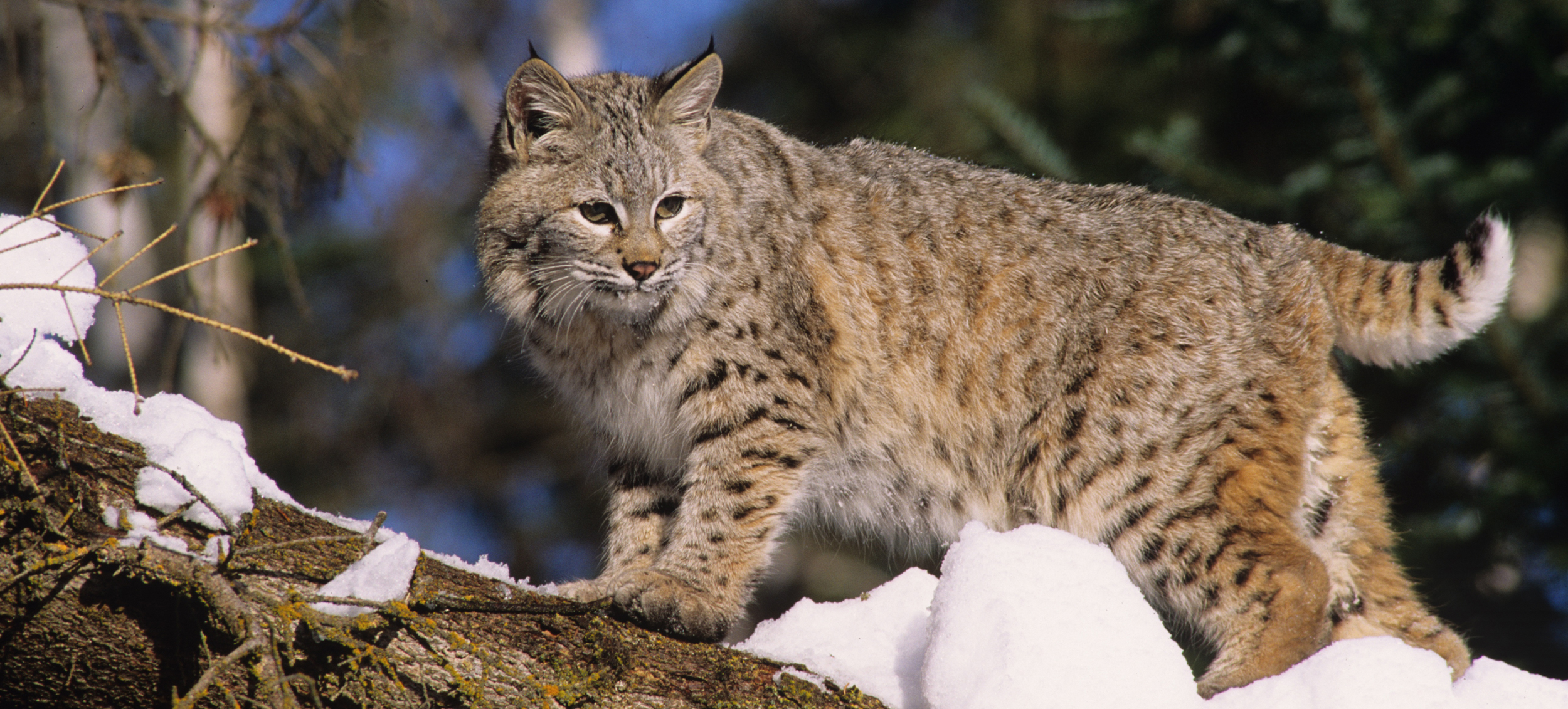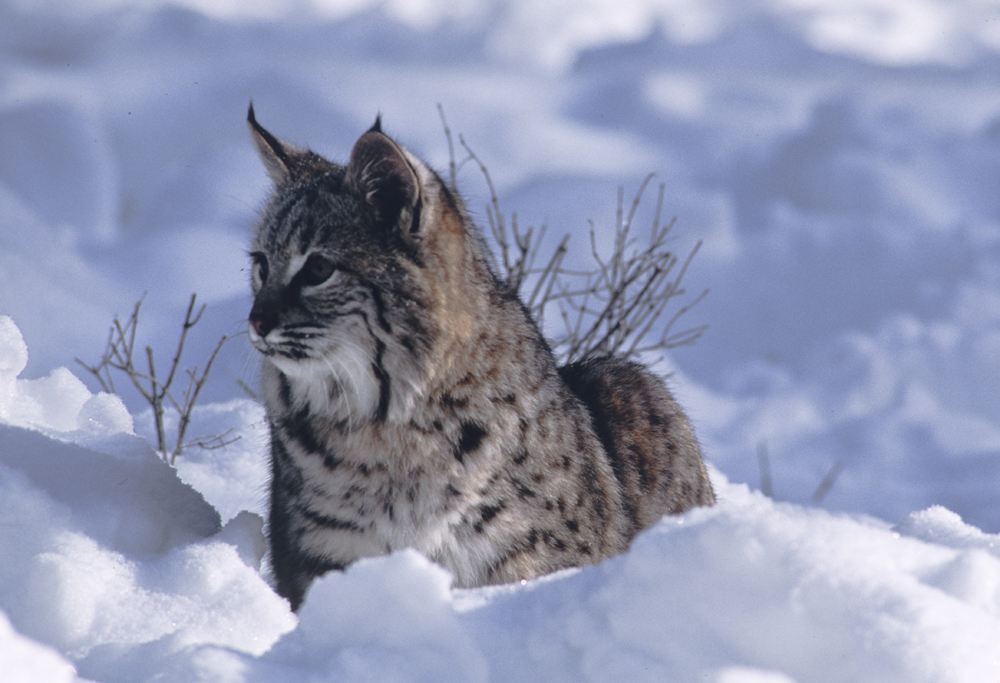Blog post by Rebecca Rose, Conservation Liaison
Extirpated from Ohio by the Mid-1800s, Bobcats are Coming Home

Our biologically rich planet is home to 38 species of wild cats—from the rusty spotted cat that would fit in the palm of your hand, to the Siberian tiger weighing in at more than 600 pounds and ten feet long from nose to tail. Six species of wild cats (bobcat, cougar, Canada lynx, ocelot, jaguarundi and jaguar) are native to North America. In Ohio, we have just one—the medium-sized bobcat, best known for its short tail. Bobcats were driven out of Ohio by a combination of over-hunting, habitat loss, and a decline in their prey. One hundred years later, in the 1960s, occasional sightings indicated the bobcat had returned to Ohio. In 1974, the species was listed as endangered in Ohio.
Recently, through the work of Dr. Shauna L. Weyrauch of the Ohio State University at Newark, there is new evidence bobcats are moving closer to central Ohio. Since 2015, her team has been conducting a long-term study of bobcats in Ohio. Last year, they conducted a survey of several parks and reserves in Licking County, about 45 miles northeast of Columbus, with bobcat sightings documented at two out of eight locations surveyed.
Richard Waugh, director of the Licking Park District, said bobcats “are skittish around people.” This could explain why the two locations recording the presence of bobcats were both remote and little-traveled parks. A recently published night-time photograph of a bobcat walking across a large, fallen tree at one of the Licking County locations underscores the importance of one special tool for wildlife conservation – cameras equipped with infrared triggers, called camera traps.

As one researcher said, “if a picture is worth a thousand words, a camera trap picture can contain a thousand data points.” Remote camera traps capture a treasure trove of information—other wildlife images snapped at the Licking County locations included coyotes, red fox, flying squirrels, chipmunks, weasels, opossum, groundhogs, raccoons, and deer. This pilot survey has confirmed the bobcat has moved westward from Coshocton into Licking County. All involved hope that this study will lead to future surveys of bobcat presence in the coming years. The full report can be viewed at: https://lickingparkdistrict.com/2020-carnivore-study/#more-5567
The return of the bobcat is good news because it signals top predators are again thriving in the region. When predator populations decline or disappear altogether, as was the case with the extirpation of bobcats in Ohio, it can have a catastrophic effect on other populations in the food web. Bobcats were removed from the Ohio endangered species list in 2014 following increased sightings, although current population numbers are still being determined. The Ohio Division of Wildlife is currently working with researchers to estimate the state’s bobcat population using genetic sampling.
These mammals, which can weigh from 11 to 30 pounds, are elusive and nocturnal, favoring a diet of rabbits, birds, mice, squirrels and other small game. As solitary animals, females choose secluded dens to raise litters of one to six kittens.
At present, there is no hunting or trapping of bobcats allowed in Ohio and vehicle strikes are thought to be the primary cause of death for these cats. Researchers are now also examining how many bobcats die on Ohio roadways, which have the fifth largest traffic volume in the United States. Qualified wildlife rehabilitators in Ohio are permitted by the Division of Wildlife to accept and rehabilitate both orphaned bobcats and in some cases injured adults, if they can provide the standards of care required to meet their needs and prepare them for release back to the wild.
At Ohio Wildlife Center we are dedicated to promoting and facilitating coexistence with all of our wild species. For more information on our work rehabilitating orphaned, ill and injured wildlife, view this video: https://vimeo.com/518757753
Photos courtesy of Tim Daniel, Ohio Department of Natural Resources